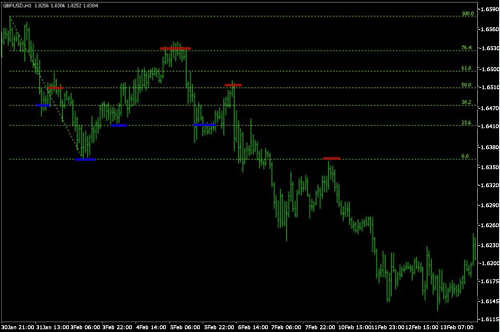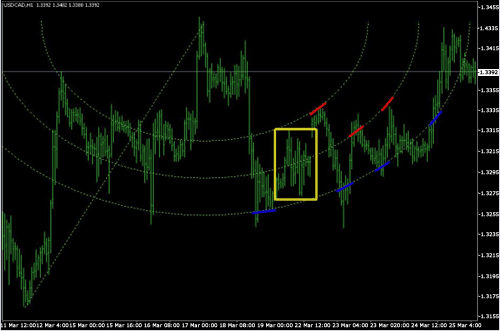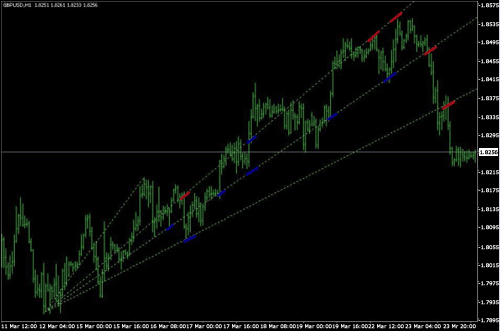
Salam... selamat bercuti di hujung minggu...bosan tak tau nak watper... sy attach kan sedikit ramalan tuk pergerakan market bulan nie...good luck



















Buy and download a printable and easy-to-read PDF document containing the ENTIRE School of Pipsology. The PDF is an exact copy of the School section, over 250 pages (pictures included), minus advertisements and chapter-ending quizzes. Read it on-screen or print it so you can take it with you on the road.
When you buy the PDF you'll receive an email within minutes with (1) a DIRECT LINK to download the PDF and (2) a PASSWORD to open the PDF. You MUST have the password to open the PDF.
*Please add INFO@BABYPIPS.COM and SERVICE@BABYPIPS.COM to your SPAM whitelist/safe-sender list.
I agree to be charged $49 for one copy of "School of Pipsology" in PDF format. PAYPAL is the only form of payment accepted. I understand I'm purchasing a single copy for myself and I won't make copies of the book or distribute it to anyone else. If someone else wants a copy I'll encourage them to purchase their own. I also understand that I will need a password to open the PDF each time.
or Cancel
Here is a little illustration that will show you the difference between risking a small percentage of your capital compared to risking a higher percentage.

You can see that there is a big difference between risking 2% of your account compared to risking 10% of your account on a single trade. If you happened to go through a losing streak and lost only 19 trades in a row, you would’ve went from starting with $20,000 to having only $3,002 left if you risked 10% on each trade. You would’ve lost over 85% of your account! If you risked only 2% you would’ve still had $13,903 which is only a 30% loss of your total account.
Of course, the last thing we want to do is lose 19 trades in a row, but even if you only lost 5 trades in a row, look at the difference between risking 2% and 10%. If you risked 2% you would still have $18,447. If you risked 10% you would only have $13,122. That’s less than what you would’ve had even if you lost all 19 trades and risked only 2% of your account!
The point of this illustration is that you want to setup your money management rules so that when you do have a drawdown period (losing streak) you will still have enough capital to stay in the game. Can you imagine if you lost 85% of your account? You would have to make 566% on what you are left with in order to get back to break even. Trust me, you do NOT want to be in that position. In fact, here is a chart that will illustrate what percentage you would have to make to breakeven if you were to lose a certain percentage of your account.

You can see that the more you lose, the harder it is to make it back to your original account size. This is all the more reason that you should do everything you can to protect your account.
So by now, I hope you have gotten it drilled in your head that you should only risk a small percentage of your account in each trade so that you can survive your losing streaks and also to avoid a large drawdown in your account. Remember, you want to be the casino…NOT the gambler!




Aku dapat forward message dari friendster tentang perkara yang lelaki perlu tahu. Ala baca sekajap je sok dah lupa. Tapi tak adil bagi lelaki, dia perlu tahu kami juga. Aku terus mencari untuk perempuan. Heheh..
Lelaki perlu tahu yang perempuan:
“Peranan LELAKI dalam kehidupan WANITA adalah sebagai pelindung dan bukan sebagai pemusnah. WANITA diciptakan oleh ALLAH swt dari tulang rusuk kiri dan untuk dipeluk dan dimanja, bukan untuk dikasari. Maka lelaki haruslah memahami HATI dan PERASAAN WANITA”
Perempuan juga perlu tahu yang lelaki:
Lelaki bukanlah sempurna 100%, walau bagaimanapun rupanya atau pandangan luarannya. Jadi, perempuan janganlah mengharapkan semua yang hebat dari lelaki! Mereka juga normal dan mempunyai kelemahan!





Diskriminasi menjatuhkan aku
Reputasi kini menjadi bisu
dan aku , ku layu
disitu
Mengharapkan sesuatu yang baru
itulah impian aku
C/O
Dan bila kau menghilang
Musnah la, musnah impian
tuk menggapai bintang
terangi hidup ku
Ku mahu kau tahu
engkaulah, destinasiku
dalam ingatanku .. oh oh oh…
Kerana diri ini tak daya lagi
menempuh hidup yang ku temui
dan aku , ku tunggu .. oh oh oh
disitu
Mengharapkan sesuatu yang baru
itulah impian aku
C/O dan C/O lagi… =)

Soros Stopped Betting Against Pound After $1.40 Level (Update1) By Simon Kennedy Jan. 28 (Bloomberg) -- Billionaire investor George Soros, who made $1 billion selling the pound in 1992, said he is no longer betting against the U.K. currency after it reached $1.40. “I did actually foresee the fall in sterling and that was one of the positions we carried,” he told reporters at the World Economic Forum in Davos, Switzerland. Below $1.40 “it seemed to me the risk-reward was no longer clear.” Soros said today that he has made money from the financial crisis. The British government’s efforts to protect the banking system from the turmoil last week led to a drop in the pound to the lowest level against the dollar since 1985. The currency traded at $1.4313 as of 12:56 p.m. in London today. “We did have a short position in sterling, but it doesn’t mean I’m bearish on sterling today or bullish,” Soros said. “It will continue to fluctuate.” Soros’s comments contrast with those of Jim Rogers, who co- founded the Quantum Fund with him and is now chairman of Singapore-based Rogers Holdings. Rogers said Jan. 20 that the pound was “finished” because of turmoil in the banking system and a decline in North Sea oil output. Hungarian-born Soros gained fame more than 16 years ago when he broke the Bank of England’s defense of the pound and drove the currency from Europe’s system of linked exchange rates. Other successful trades included a bet that the deutsche mark would rise after the collapse of the Berlin wall and a wager that Japanese stocks would start to tumble in 1989. Brown’s Comments U.K. Prime Minister Gordon Brown has so far resisted addressing sterling’s plunge and dismissed the warnings of investors by saying the government’s policy is to target inflation and not the exchange rate. “The experience of targeting the pound and targeting the exchange rate has not been one particularly beneficial to this country,” Brown said today in Parliament. Soros said his long-held pessimism in the outlook in the world economy allowed him to make money during the crisis. “I was able to protect my capital and get a rate of return,” he said. “In the current environment, to be in positive territory is itself an accomplishment.” Soros said President Barack Obama’s administration will struggle to revive the U.S. economy and financial system because President George W. Bush’s administration was “behind the curve” in responding to the crisis and now the money required is now “too big.” He urged the government to recapitalize banks and reduce the amount of housing foreclosures. “The situation will continue to deteriorate,” he said. Soros said the widening gap between the interest rates Spain, Italy, Greece and Portugal must pay investors to borrow for 10 years and the rate charged to Germany reflects “structural weaknesses in the construction of the euro” and the lack of a common fiscal authority. Governments will eventually have to help each other out because individually they lack the “borrowing power” to protect their banking systems, Soros said. To contact the reporters on this story: Simon Kennedy in Davos at skennedy4@bloomberg.net Last Updated: January 28, 2009 08:33 EST |

The European Central Bank has lowered its benchmark interest rate by 50 bps to 2%, yet in our opinion, the rate cut came a bit too late, and we expect more EUR/USD weakness going forward on speculation that we may have a considerable deterioration of the euro zone economy in 2009.
The Euro Zone Is Experiencing a Significant Slowdown, Trichet Said
In the introductory statement ahead of the regular press conference, Jean-Claude Trichet sounded very pessimistic. The president of the ECB said the euro zone is experiencing a significant slowdown and “today’s decision takes into account that inflationary pressures have continued to diminish, owing in particular to the further weakening in the economic outlook.” Looking further ahead, he said that we may “continue to see global economic weakness and very sluggish domestic demand persisting in the coming quarters as the impact of the financial tensions on activity continues.”
Euro/Dollar Forecast for 2009 (Updated)
It is always difficult to make exchange rate forecasts, particularly when the currency market is very volatile. Even so, in this article, we argue that a considerable deterioration of the euro zone economy in 2009 could lead to a significant shift of interest rate differentials in favor of the US dollar and keep the EUR/USD under pressure over the next few months. Indeed, recent economic data points toward weakening of real GDP growth in the euro zone economy, and a more accommodative monetary policy by the European Central Bank could be needed to prevent the region from falling into a much deeper recession. On the other hand, the recent selloff in commodities, particularly in oil, should alleviate some downward pressure from the US economy, which has been running a current account deficit of nearly 5% of GDP.
The ECB Underestimated the Size of the Financial Crisis
The biggest housing and credit bubble in history continues to threaten the entire global financial system, and the once-resilient euro zone economy is slowly succumbing to tight credit conditions and a slowing global economy. Initially, European policy leaders thought the financial crisis would be confined to the United States, and the ECB was slower to act than the Federal Reserve. Inflation in the euro zone was well above a level consistent with price stability, and the ECB was concerned with second-round effects of energy prices in wage and price setting. However, the credit storm that began in the US ended up affecting the euro zone and European banks were forced to write off $229 billion out of a global total of $588 billion in losses related the collapse of the US subprime market. While no one can deny that Jean-Claude Trichet, the ECB president, has done a lot to boost the euro as a credible alternative for the US dollar, it is also becoming clear that the ECB perhaps underestimated the size of the financial crisis by keeping interest rates too high for too long. In fact, the euro zone is now in a technical recession and facing the most serious test since the euro was introduced to the world financial markets in 1999.
Risks for This Trade
In 2008, the US dollar appreciated against several of the world’s most heavily traded currencies. To some extent, investors were reluctant to take leveraged positions on higher yielding currencies, and the US dollar was helped by a strong demand from financial institutions seeking a safe-haven currency. However, holding a long position in the US dollar also involves some risks. In fact, the US economy is likely to continue to face substantial challenges in 2009, including further job losses and a rapid deleveraging in the financial sector. In addition, some investors are concerned with the fiscal impact of the rescue plan, which could cost almost 5% of GDP. Currently, the United States federal government runs a deficit of $438 billion, or 3% of gross domestic product, and the bailout plan could push the fiscal deficit next year to $1 trillion, or 7% of GDP.
Hi again, Everyone!
Despite the U.S. CPI coming “relatively in line”, the TIC Treasury Outflows Data atrocious , and Capacity Utilization and Industrial Production down… we are still making a decent bounce in our major “Match” of the Dollar Yen.
Here is our same Daily view from my previous Post…and we are grinding out some daylight here with the Dollar bounce off of Support.
Be sure to click once for the Captures, as most of the Analysis is on the Charts!
(Post-Time is 15:25 GMT)
Here on two Hourly captures, we can see the strength of the counter-trend move here…
We will meet again for the Sydney Open on Sunday and check our progress here with some more ideas!
A good weekend to all, and we’ll see you then!
Monday January 12th
By Don Curren
Of DOW JONES NEWSWIRES
Canada Morning